How to plant roses – plus tips and advice on growing roses
Learn how to plant roses as beautiful, fragrant and colorful additions to gardens of all sizes, and enjoy the best blooms with advice on growing roses

Leigh Clapp
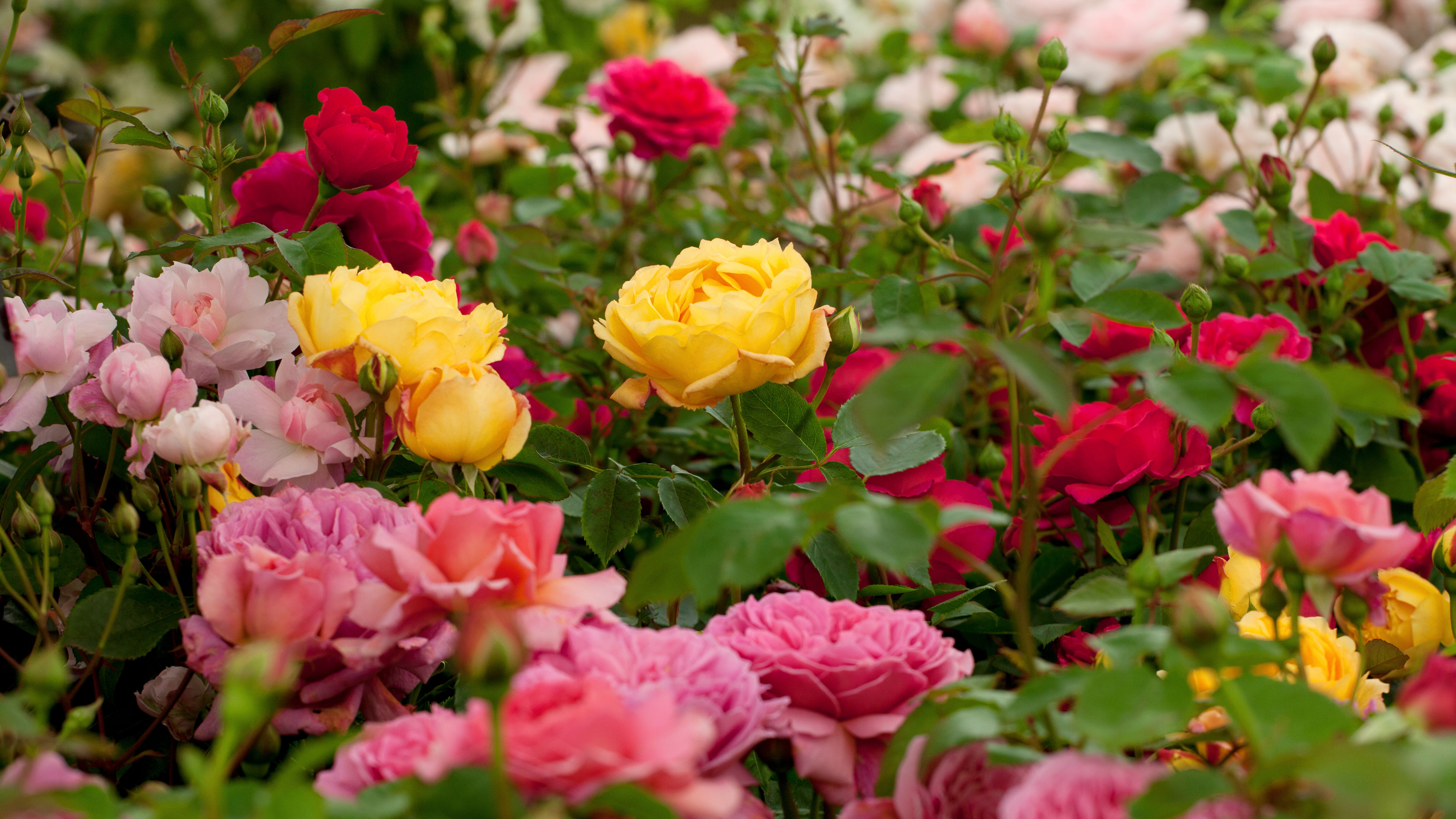
Once you know how to plant roses you can enjoy the beautiful blooms of these 'queen of flowers' in many different areas of your garden.
Roses offer such variety of color, shape and fragrance, and are an enduring garden favorite, loved for their elegance and romance. Whether entwining with clematis around an arbour, mixed in an herbaceous border, or sprawling over a fence, there are many different options for rose garden ideas.
Roses are versatile for both formal and informal styles, making them a gorgeous addition to any yard. They are also long flowering and can bring delight to your garden from June right through to December.
It’s easy to be beguiled by the vast array on offer when designing a rose garden, but by doing your research and selecting good quality, disease-resistant varieties that will suit the conditions in your garden, you will have the most success in growing roses as part of your flower bed ideas.
How to plant roses
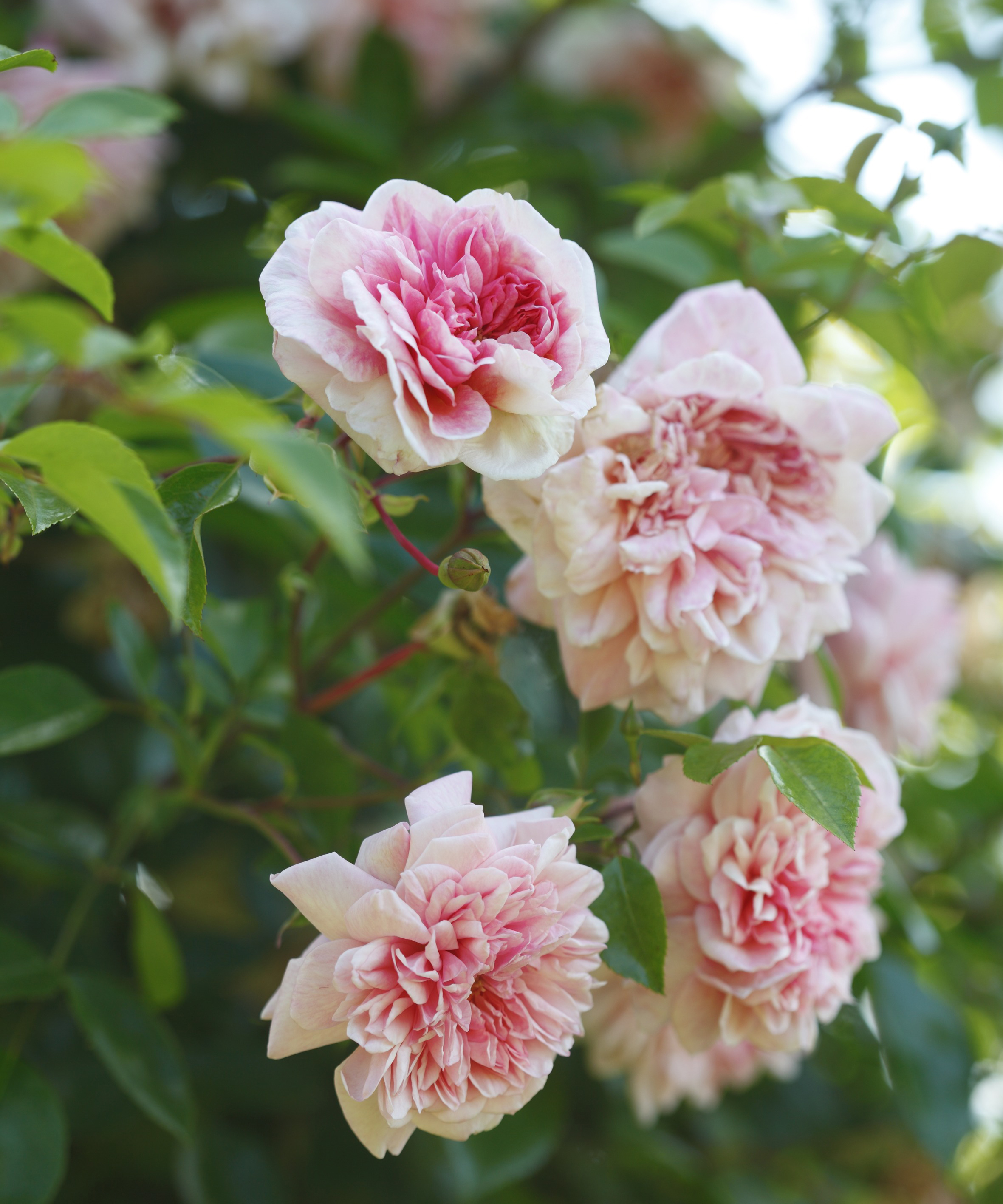
The method for how to plant roses will vary slightly depending on what type of rose you chose, whether climber, standard or shrub. So you first need to know about the three main categories of roses:
- Species or wild roses like to sprawl in a natural style, are mostly single-flowered, and many have colorful hips in fall, such as rugosa, glauca, moyesii and canina.
- Roses from before 1860 are known as old garden roses and are characterised by large graceful shrubs with mostly one flowering, are the best fragrant roses and include alba, gallica, damask, cabbage and moss roses.
- Modern roses, bred from the early 20th century, have characteristics of repeat-flowering and a striving for disease resistance, vigour and flower quality. These cover hybrid teas, floribundas, landscape, climbers, miniature and David Austin English roses. There are specific methods for how to plant climbing roses, for instance, for the best displays.
'To add a little confusion, the diverse and versatile shrub roses don’t fit any distinct classification. They can be wild rose species and also hybrids, taking the best of the old, combined with modern traits of repeat-flowering and diversity of form, color and fragrance,' explains gardens writer and photographer Leigh Clapp.
Where to plant roses

Knowing where to plant roses is a very important aspect of how to plant roses and is largely down to the variety. Roses are very versatile, with hundreds of varieties, from flowering climbers and ramblers, to bush and flowering shrubs, and even ground cover roses – you can try growing roses in almost every situation in the garden.
Design expertise in your inbox – from inspiring decorating ideas and beautiful celebrity homes to practical gardening advice and shopping round-ups.
Before planting, it’s important to choose a cultivator appropriate for the conditions in the chosen position in your yard.
Generally, roses are sun-loving plants, preferring from six to eight hours of sun a day. 'They like well-drained soil that still holds moisture long enough for the roots to absorb moisture – incorporate some well-rotted compost or manure at planting. Ideally they prefer a soil pH of 6.5, with a heavy loam soil. Too much clay can cause waterlogged roots and sandy soil will drain too freely before the nutrients can be absorbed,' explains Leigh Clapp. There are ways to establish the soil type in your garden.
If you have dense clay adding some compost, composted manure or leaf mulch will loosen it.
There are some really tough roses that cope with a range of conditions, including rugosa and some vigorous cultivars. Some varieties can be potential shrubs for shade, such as floribunda and shrub roses, as they tolerate shade so long as it isn’t caused by trees. Do check the plant's details carefully for shade tolerance.
Don’t plant roses in exposed locations as wind can both damage blooms and cause evaporation of moisture from foliage. Plant about one metre from other plants to avoid competition and about 23in. (60cm) from another rose.
If replacing old roses with new then care needs to be taken in how to plant roses. 'It's advised to dig out the soil to a depth and width of 18in. (45cm) and to swap it with soil from a different part of the garden to reduce the risk of replant disease,' says Leigh Clapp.
You can also grow roses in pots if you are short of space and it is the miniature or patio types of roses that are most suited to containers
Container-grown roses or bare root roses?
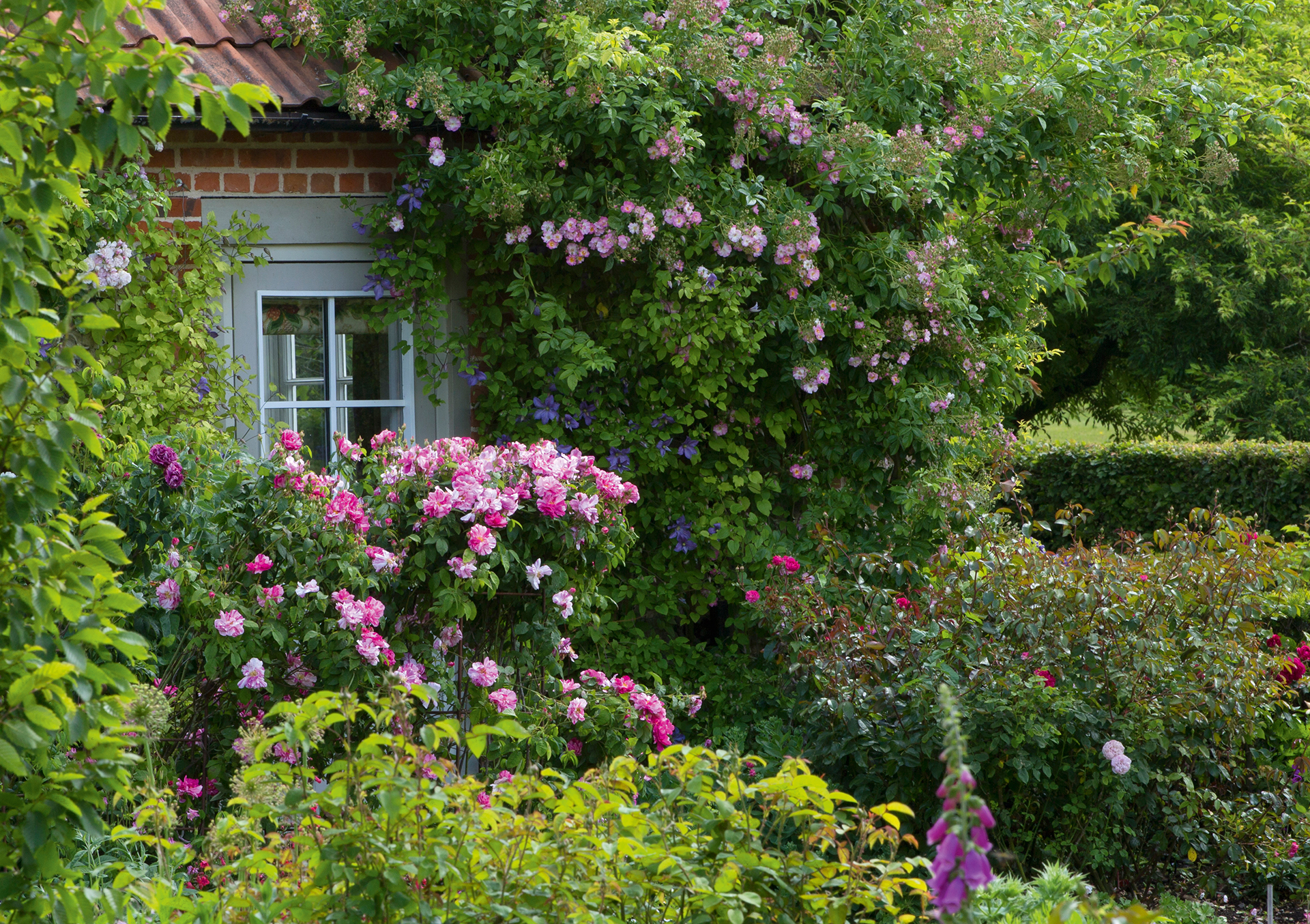
There are two ways to buy roses: as container-grown plants, or as bare root plants.
Bare root plants are usually purchased online or via mail-order and come in a semi dormant or dormant state with no soil on the roots. They are the preferred choice for many gardeners. 'Bare-root roses are generally the best quality and have a wider spread of roots than container plants,' says Leigh Clapp.
If planting multiple roses it is recommended to buy bare root plants as it is more economical and there’s also a great variety. It is easy to get to grips with how to plant bare root trees and shrubs.
‘I believe the best practice for optimal healthy roses is to be as eco-friendly as possible as well as choosing the best and healthiest varieties available,’ explains Harry Baldwin, Head of Horticulture at Borde Hill Garden.
When to plant roses
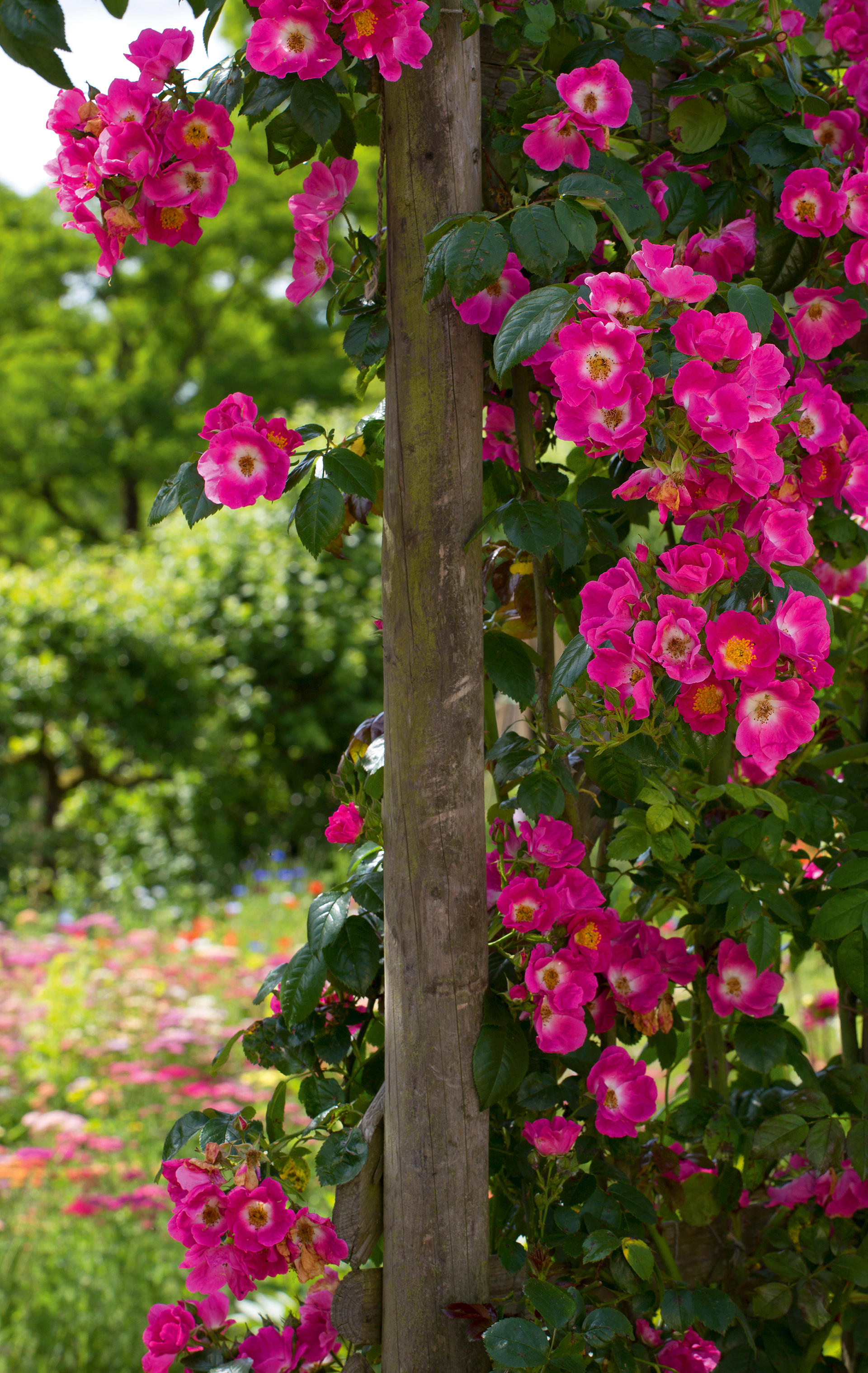
Knowing when to plant roses is important for success in growing roses.
'June through to August is a good time to make a note of which roses you like best and want to introduce into your garden,' says National Trust garden researcher Rebecca Bevan. 'Try to hold off buying and planting them until the fall or winter, when you can order them bare root.'
Bare root roses can be bought from late fall to early spring and are best planted just before or at the beginning of their dormant period, in late fall, or early winter. This gives them time to establish roots ready to flourish in summer time. Don’t plant roses when the ground is frozen in mid-winter
Container-grown roses can be planted at any time, provided the ground is not extremely dry or frozen.
How to plant bare root roses
The step-by-step instructions below are for planting bare root shrub roses.
You will need:
- Garden fork or spade
- Bucket
- Watering can
- Soil improver or well-rotted manure
1. Check the conditions and the roots
Aim to plant the rose as soon as possible after its arrival, but delay planting if the ground is waterlogged or frozen. Examine the rose to make sure it has not dried out in transit. The rose should have two or three strong shoots and a healthy network of roots. Remove any diseased or damaged growth and remove any straggly stems.
2. Hydrate the rose
Soak the bare root rose in a bucket of water for an hour or two before planting.
3. Prepare the soil for planting roses
Prepare the bed by digging over with a garden fork and removing any stones or weeds. Dig a planting hole in your prepared bed large enough to fit the roots – this will depend on their span and length, but a hole around 15in. (40cm) wide and deep should be adequate.
Roses are hungry plants, so add a shovel of soil improver or well-rotted manure to the hole and fork it into the soil at the bottom.
4. Boost the roots
Before planting the rose consider sprinkling the roots with mycorrhizal fungi. Recommended by British rose breeder David Austin, this will increase the absorption and boost the performance of the root system.
5. Position the rose in the hole
Place the rose in the center of the hole taking care to spread out the roots. At this point it is important to make sure the graft of the rose – where the stems meet the roots – is buried around an inch under the soil. To help check this, you can lay a bamboo cane horizontally over the hole.
6. Back-fill and finish the planting
Back fill the hole with soil, forking in a shovel of soil improver or manure before infilling. Lightly tread around the rose to make sure there are not air pockets, then rake over the soil and water well.
How to plant container grown roses
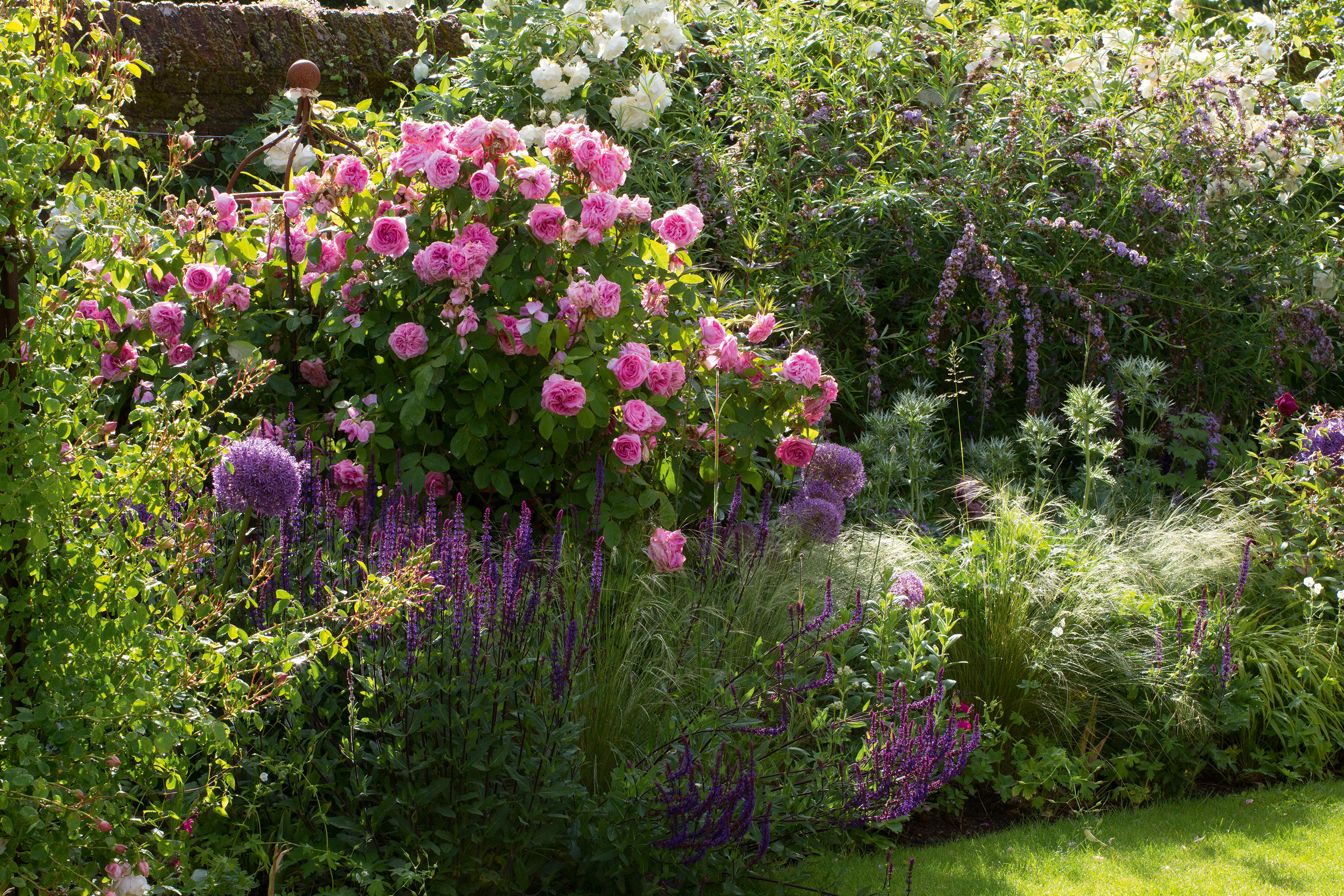
There is no rush when it comes to planting container roses, they can be left outside three weeks or more before planting provided they are kept watered. Before planting place in a bucket of water until moisture comes to the surface of the compost and follow the same steps as above.
Where Is The Best Place To Plant A Rose?
There are many places you can plant roses. With their wide variety of colors, sizes and growth habits there are rose choices for practically any garden setting. They can be grown in dedicated beds, among a jostle of other plants in borders, draped over arches and walls, trained around a door, used as groundcover or varieties selected for containers. You can also learn how to take rose cuttings to increase the number of these beautiful blooms in your garden for free.
Generally, all roses require plenty of sunlight, at least four hours a day, as well as shelter from strong winds. However, there are even varieties that can be grown in north facing positions with poor soil quality.
Roses will not like a waterlogged position, but like water retentive yet well draining soil, and will not thrive in shade or if crowded by other plants. If planting multiple shrub roses, ensure spacing of around 15-25in. (40-65cm) and about 11in. (30cm) from the edge of the rose bed.
Root decay can occur from diseases such as honey fungus, if the plant is waterlogged. Don’t plant roses where they have recently grown to avoid replant disorder. ‘To overcome this it is best to choose new ground for the roses. If this is not possible to do, adopt a combined strategy of soil exchange and the use of Mycorrhizal fungi to aid their establishment,’ suggests Jon Webster.
What is the best month to plant roses?
The best month to plant roses will depend on where you live and also what type of rose you have bought – whether a bare root rose or a container grown rose, as explained above.
What is the best way to plant a rose?
The best way for how to plant roses depends on whether you buy bare root roses or container grown plants. This article takes you through step by step how to plant a bare root rose and also a container grown one, so you can find all all the advice and tips you need above.
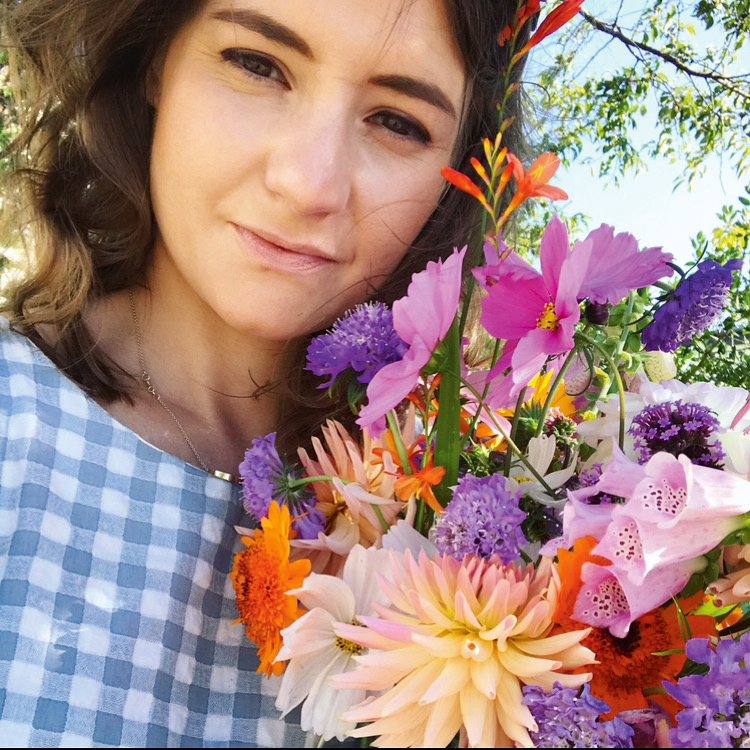
Pippa is a contributor to Homes & Gardens. A graduate of Art History and formerly Style Editor at Period Living, she is passionate about architecture, creating decorating content, interior styling and writing about craft and historic homes. She enjoys searching out beautiful images and the latest trends to share with the Homes & Gardens audience. A keen gardener, when she’s not writing, you’ll find her growing flowers on her yard for styling projects.
- Leigh ClappContributing Editor